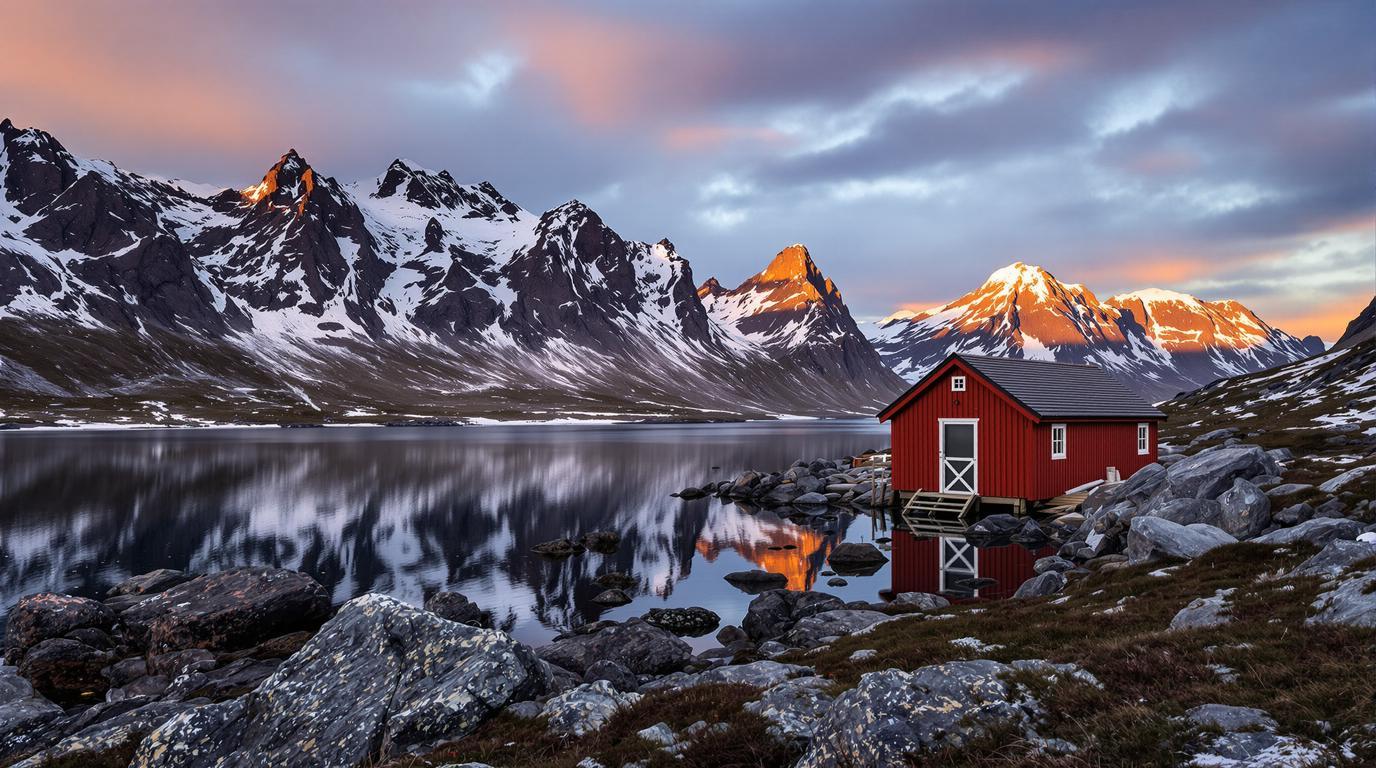Under the midnight sun of Norway’s Arctic Circle, I experienced a dream-like reality that few travelers ever witness. For just $100 a night, I stayed in a traditional red fisherman’s cabin perched at the edge of the sea in Lofoten, where summer days stretch endlessly into night without the sun ever setting below the horizon.
A crimson sanctuary amid nature’s grandeur
My rorbuer—the local term for these distinctive fisherman’s huts—stood proudly along the shoreline, its weathered red wooden exterior telling stories of generations of cod fishermen who once inhabited these exact structures during fishing seasons. The interior struck a perfect balance between rustic charm and modern comfort, with exposed wooden beams framing picture windows that showcased the dramatic mountain-meets-sea landscape.
“These cabins are our connection to the past,” explained Lars, my elderly neighbor who had fished these waters for over 50 years. “The red color comes from our tradition of mixing cod liver oil with ochre pigment—a natural preservation technique that protected the wood from harsh Arctic elements.”
The phenomenon that bends time
Nothing prepares you for the disorienting magic of the midnight sun. At 11 PM, golden light bathed the mountains in warm amber hues. By midnight, the sun hovered just above the horizon, casting long shadows across the water. At 2 AM, birds continued their cheerful songs as if it were midday, while I sat mesmerized on my cabin’s small deck, the concept of bedtime completely forgotten.
The constant daylight transformed my experience entirely. Hiking paths remained accessible at all hours, allowing me to explore the jagged peaks and pristine beaches without concern for darkness. This phenomenon occurs between late May and mid-July, when the sun never dips below the horizon—a stark contrast to winter’s polar night when darkness reigns.
Where tradition meets the elements
My cabin in the village of Reine offered front-row seats to one of Norway’s most spectacular vistas. Pointed mountains erupted from the sea in dramatic fashion, their reflections dancing across the glassy fjord waters. The simple pleasures became extraordinary—making coffee at 1 AM while watching fishing boats return with their catch, the midnight sun illuminating their path.
Similar magical experiences await in other unique island destinations, though few offer the surreal timelessness of Lofoten’s endless daylight.
A fisherman’s legacy reimagined
These cabins, many dating back centuries, have been thoughtfully renovated to accommodate modern travelers without sacrificing their authentic character. My unit featured a small kitchen where I prepared freshly caught cod purchased from local fishermen at prices that would make any seafood lover weep with joy.
“We’ve adapted these cabins for travelers, but we’ve kept their soul intact,” shared Ingrid, who manages several rorbuer properties. “The walls have absorbed generations of stories—the laughter, the struggles, the connection to the sea.”
The experience reminded me of other cultural havens where ancient traditions are preserved amid natural splendor, like Bali’s temple-filled landscapes or Greek islands dotted with churches and neoclassical architecture.
Practical considerations for midnight sun seekers
Finding affordable accommodations in Lofoten can be challenging during peak summer season when travelers flock to witness the midnight sun. At $100 per night, my rorbuer represented exceptional value compared to traditional hotels. Many cabins include kitchen facilities, allowing budget-conscious travelers to prepare meals while watching the ever-present sun cast its glow across the water.
For those seeking pristine natural settings similar to Lofoten but with fewer crowds, consider Spain’s lesser-known island paradises as an alternative escape.
The unforgettable glow of eternal daylight
There’s something profoundly moving about watching the sky shift through endless variations of gold, pink, and lavender without ever fully darkening. As I gazed at mountains bathed in an otherworldly glow at 3 AM, I understood why photographers and artists have long been drawn to this remote archipelago, much like they flock to capture spectacular sunset transformations at Spain’s ancient palaces.
My week in that simple red cabin by the sea—where time seemed to pause beneath the never-setting sun—became more than just accommodation. It was an immersion into a place where nature rewrites the rules, where darkness surrenders to perpetual light, and where $100 buys not just a night’s stay, but entry into one of the world’s most extraordinary natural phenomena.
